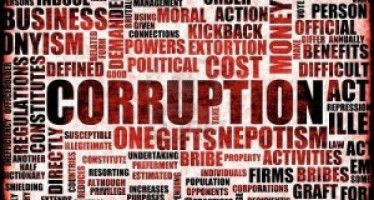Pension reform puts teacher take-home pay in cross hairs
Dec. 19, 2012
By Chris Reed
 The conventional wisdom about the 400,000 members of the California Teachers Association and the 120,000 members of the California Federation of Teachers is difficult to dispute: Their unions dominate Sacramento in a way no other special interest remotely rivals.
The conventional wisdom about the 400,000 members of the California Teachers Association and the 120,000 members of the California Federation of Teachers is difficult to dispute: Their unions dominate Sacramento in a way no other special interest remotely rivals.
Aside from charter schools way back in 1992, the only fundamental school reform to get through the Legislature the past 20 years is the one that swelled the CTA’s and the CFT’s ranks: classroom-size reduction. No other special interest gets promised future multibillion-dollar payoffs to go along with tough budgets, as the teacher unions secured in 2009.

But in early 2013, we could see that conventional wisdom tested in a way without modern precedent. The issue is how to shore up the struggling California State Teachers’ Retirement System, which as of Oct. 31 had $154.8 billion in investments and an unfunded liability of $64.5 billion, meaning it is only 71 percent funded.
The state Legislature sets the contribution rates for teachers that each school district must pay. The status quo has long been that employers contribute 8.25 percent of pay, teachers 8 percent of pay and the state 2 percent of pay.
But Gov. Jerry Brown signed a pension reform plan in September, AB 340 by Assemblyman Warren Furutani, D-Gardena. Under the reform, government agencies in California must adopt contracts going forward that have employers and employees equally share the normal cost of pension liabilities by 2018.
Bank accounts would shrink
If that happens, it means a sharp cut in take-home pay for every CTA and CFT member. As Ed Mendel laid out in calpensions.com, actuaries say teachers hired going forward under the less generous terms of the new state pension will need to pay 15.9 percent of pay — nearly double the current 8 percent contribution. Meanwhile, veteran teachers would need to pay 18.3 percent of pay — 10.3 percentage points more than they now pay and more than the total that is now set aside by all three contributors combined (teachers, districts and the state treasury).
This 50-50 required split of pension costs is jaw-dropping given what the CalSTRS board recommended when the topic of shoring up the teachers’ pension fund came up in 2007. It wanted teachers to go from contributing 8 percent to 8.5 percent; for districts to gradually go from 8.25 percent to a maximum of 13 percent; and for the state to gradually go from 2 percent to a maximum of 3.25 percent.
Or, to put the plan in a context that more readily shows its outrageousness, CalSTRS wanted teachers to increase their contributions by 6.25 percent — and for taxpayers to increase their contributions by 59 percent, nearly 10 times as much! The result would have been a pension system in which taxpayers had roughly twice the obligation (66 percent) as teachers (34 percent).
With the state economy rapidly slowing and the Schwarzenegger administration strongly opposed, the Legislature never passed the CalSTRS proposal. That the CalSTRS board put the plan forward as a serious policy alternative showed that the CTA and CFT were calling the shots — just as Senate Democrats wanted.
In a 2006 Senate committee vote, State Sens. Don Perata, Debra Bowen and Gil Cedillo rejected Gov. Arnold Schwarzenegger’s nomination of David Crane to the California State Teachers Retirement System board. A Democrat himself, Crane is a sharp San Francisco financier and government reformer. Crane’s disqualification? “The three Democrats on the five-member Senate (Rules Committee) agreed that Crane seemed too concerned about the burden of pension shortfalls on taxpayers,” The Los Angeles Times reported.
Teachers’ unions unaccustomed to treatment
The CTA and the CFT must daydream about the good old days. The unions can’t even be very confident that the Legislature will do rope-a-dope with Brown’s pension reform by just never changing the present contribution rules for CalSTRS. That’s because state lawmakers also passed a bill that directs CalSTRS to prepare three alternatives that address the pension underfunding and to formally present it to the Legislature by Feb. 15, 2013.
So, in a rational world, the teachers’ unions would appear to be trapped, likely to face a permanent cut in take-home pay of about 10 percent. They are sure to sue and claim that existing funding formulas amount to a vested pension benefit, as a CalSTRS legal opinion concludes. Yet that legal view seems shakier than ever given the readiness of so many collective bargaining units to accept increases in their contributions and to make concessions in recent years. There’s also no question that judges are influenced by the headlines of the era.
But that’s forecasting what would happen in a rational world, not Sacramento — and especially not in the Assembly, where union power is so intense that 21 Democrats actually voted against a bill to overturn school regulations that allowed only union nurses to give medical help to students suffering life-threatening epileptic seizures. The 21 included Speaker John Perez, D-Los Angeles.
So expect an epic, years-long battle over AB 340. It may be law, but laws can be changed, ignored or sabotaged — and the CTA and the CFT can’t live with the new status quo that the governor’s pension reform portends.
Related Articles
Government held to far lower standard than private sector
The gap between the standards seen in the private sector and the public sector have never seemed bigger. In the
Arena lawsuit: Sacramento officials will be deposed
The judge's order in the Sacramento arena lawsuit is in: Sacramento City Councilman Kevin McCarty and Sacramento Economic Development Director Jim
No, CA not thriving: Double-whammy from U-T San Diego
June 2, 2013 By Chris Reed The newly in-vogue theory in the national media and in the particularly stupid wings



